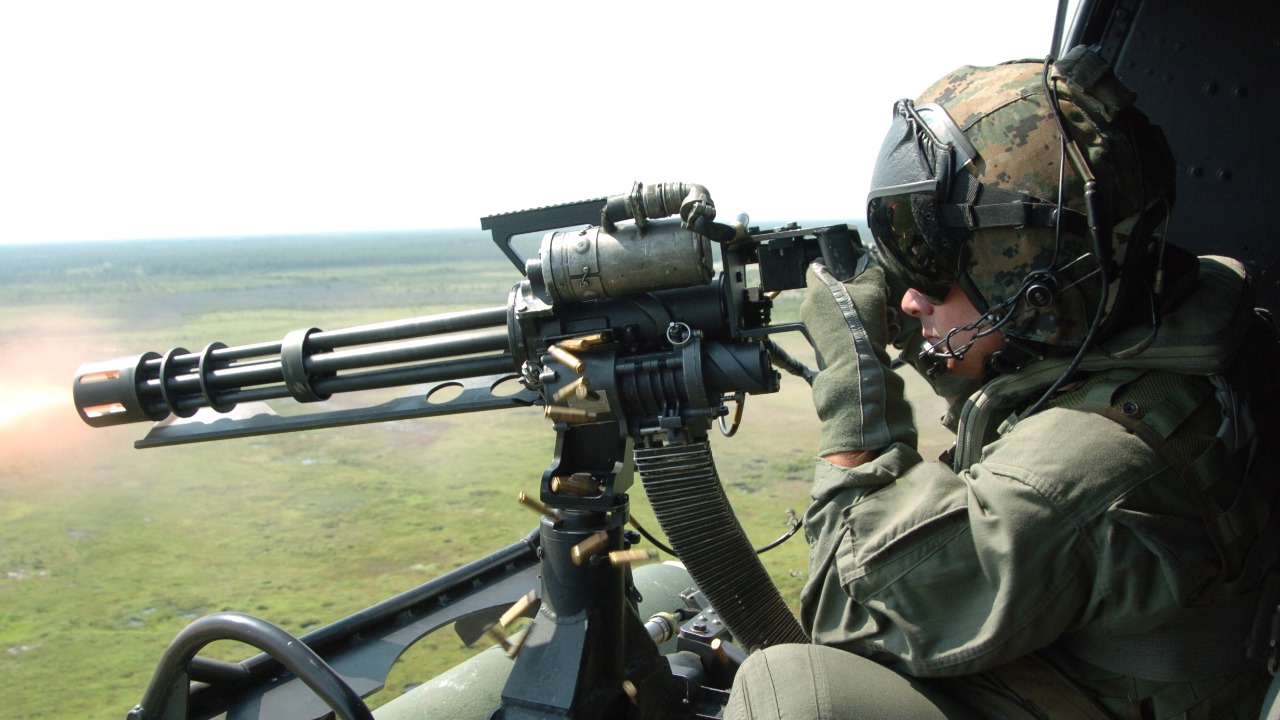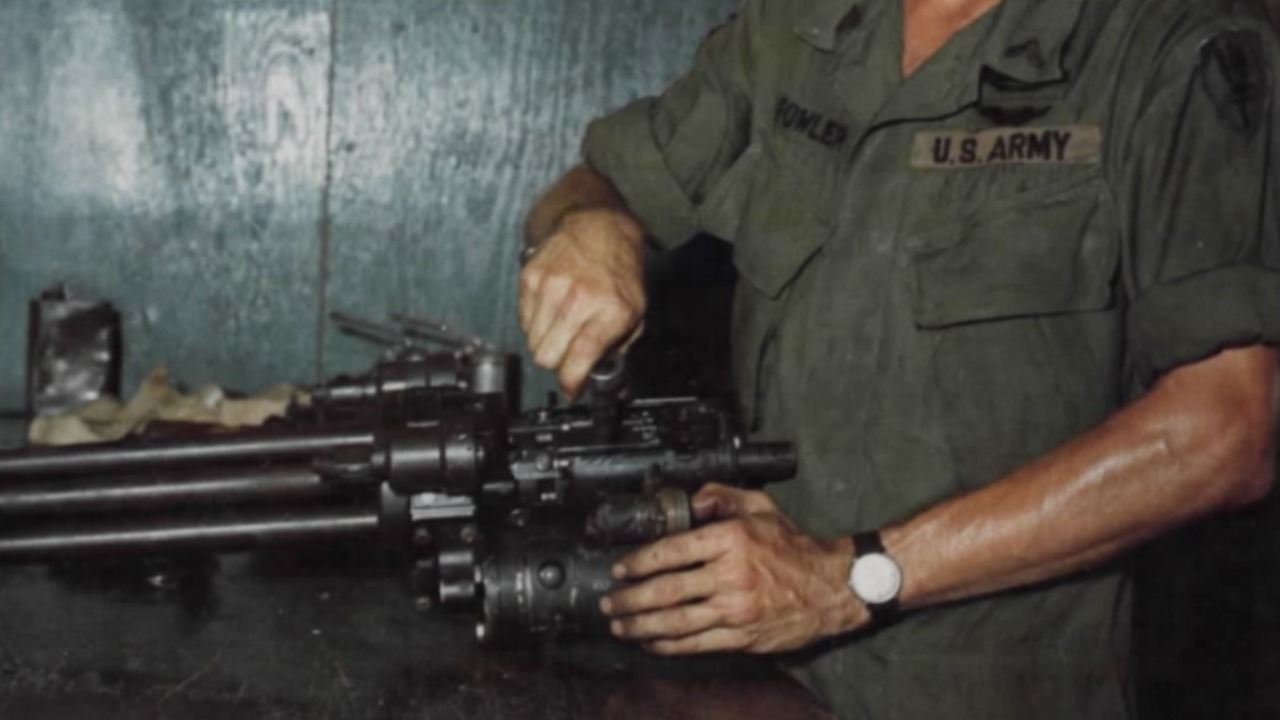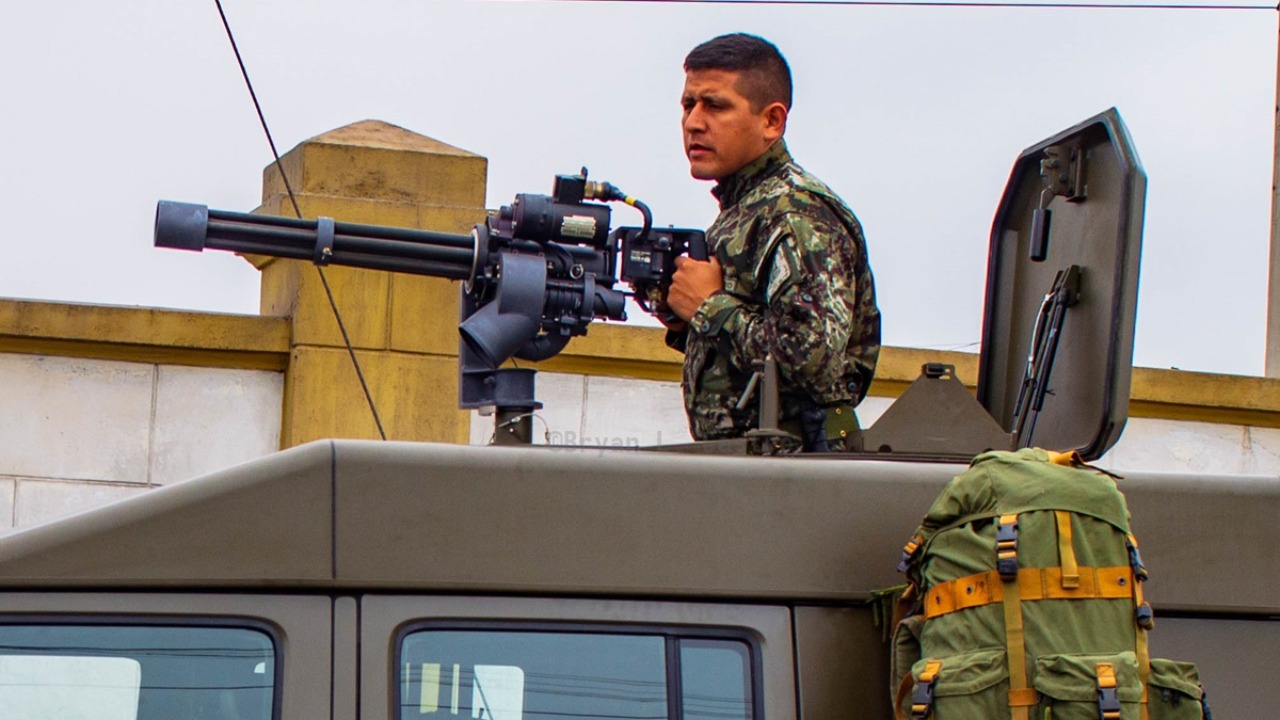
The M134 Minigun, a six-barrel rotary machine gun, marked a significant evolution in military hardware during the 1960s. With a staggering capability to fire up to 6,000 bullets per minute, this US military gun redefined battlefield dynamics and remains a point of interest for military enthusiasts and scholars alike.
Origins and Design of the M134 Minigun

The development of the M134 Minigun was born from the necessity to enhance firepower in the military arsenal. The Minigun’s design was an experimental adaptation of the larger M61 Vulcan, miniaturized for use by infantry and on helicopters. The gun’s high rate of fire is attributed to its six rotating barrels, which also distribute heat and reduce wear on each barrel.
General Electric played a pivotal role in the M134’s creation, leveraging their expertise in electrically-driven rotary systems. The gun’s motor-driven mechanism, powered by electricity or gas, enabled the high-speed rotation of the barrels and the rapid feed of ammunition, contributing to its iconic rate of fire.
Operational Use and Effectiveness of the M134

The M134 Minigun was widely deployed during the Vietnam War, primarily by the US Army and Air Force. Its high rate of fire proved invaluable in suppressive fire roles, particularly during helicopter-based operations. The gun’s performance effectively changed the face of close air support and significantly impacted battlefield strategies.
Case studies from the Vietnam War illustrate the M134’s effectiveness in combat. For instance, the gun was often mounted on the UH-1 Huey helicopters, providing critical fire support during troop insertion and extraction under heavy enemy fire. Its psychological impact on the enemy was equally profound, often breaking their will to engage when faced with such overwhelming firepower.
The M134 Minigun’s Impact on Ballistics and Wound Trauma

The ballistic properties of the M134 Minigun are another aspect of its effectiveness. The gun’s high rate of fire and the velocity of the 7.62mm rounds result in a significant energy transfer on impact, causing devastating wounds.
Medical journals have extensively studied the wound trauma caused by the M134. The gun’s rounds often cause cavitation injuries, where the energy transfer from the bullet creates a temporary cavity in the body tissue, resulting in severe trauma. In comparison, other firearms of the same era could not match the Minigun in terms of wound trauma, further enhancing its reputation on the battlefield.
Legacy and Modern-Day Applications of the M134 Minigun

The M134 Minigun’s design and effectiveness have greatly influenced subsequent firearm designs. The concept of rotary barrels and electrically driven mechanisms are seen in various modern automatic weapons. Moreover, the M134 continues to be in use in the US military and foreign armed forces, testament to its enduring relevance and effectiveness.
The Minigun’s presence in popular culture is also significant, featuring in numerous films and video games. The gun’s unique design and devastating firepower have made it a symbol of overwhelming force, often used to signify a turning point in the narrative.
Comparison: M134 Minigun and the M61 Vulcan

The M61 Vulcan, another high rate of fire US military gun, shares its roots with the M134 Minigun. Both guns were developed by General Electric and feature a multi-barrel rotary design. However, the Vulcan is significantly larger and fires a larger caliber round (20mm) compared to the Minigun’s 7.62mm.
When comparing the effectiveness of both guns, one must consider their intended roles. The Vulcan, with its larger caliber and higher muzzle velocity, is primarily used in an anti-aircraft role, while the Minigun is used more for ground support. Both guns have left a lasting impact on modern warfare, redefining the concepts of firepower and suppressive fire.
More in-depth information about these powerful machines can be found in this article about the M61 Vulcan and this scholarly study on the M134 Minigun.